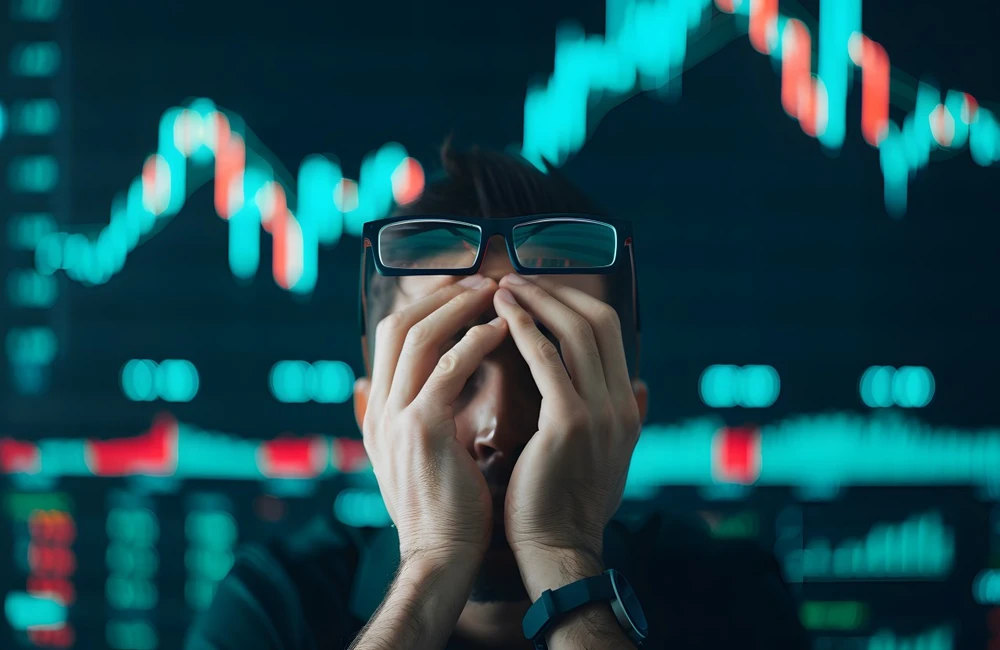ASX futures were down 21 points, or 0.3 percent, to 7434 as of 8:00 am on Thursday, potential for the first negative day.
US stocks were down Wednesday morning, then up before the afternoon’s release of the minutes from the Fed’s mid-March meeting, before they dropped again. The technology-focused Nasdaq Composite Index fell 2.2%. The S&P 500 dropped 1 percent and the blue-chip Dow Jones Industrial Average shed 0.4 percent.
The breakneck equity rally that seized held mid-March is losing steam this month as interest rate angst grips markets. The Federal Reserve’s dove, Governor Lael Brainard, on Tuesday said the central bank was strongly committed to forcing inflation down this year. The day after, minutes from the Fed’s March meeting showed that the central bank was accelerating efforts to shrink its $9 trillion asset portfolio. Officials also debated several 0.5 percent rate increases this year if inflation remains high.
“It’s a large-scale de-risking day” as money managers accumulate cash in a highly uncertain global economic environment, said Aidan Whitehead, head of equity trading at JMP Securities. The uncertainty is what's triggering the volatility, and there's so much of it, especially with rates.”
On the home front, the S&P/ASX 200 finished 0.5% lower at 7490.1 as a tech sell-off weighed on the market in the wake of Tuesday’s gains.
Tech stocks dropped 2.9%, and the materials sector was off 1.5%. Novonix fell 6.9%, Block declined 6.9% and Life360 gave up 5.3%.
Virtus Health, which said earlier that it would look at a takeover approach from BGH, added 1.0%.
The best-performed stock on the market for the day was Whitehaven Coal, up 5.5 percent, followed by Polynovo and AMP, both up 4.6 percent.
In commodities, iron ore fell 0.4% to $US 160.20 a tonne; gold futures were up 0.2 percent at $1,927.50; Brent Crude was down 5.2 percent at $US 101.07 a barrel.
US bonds fell for a fourth day as investors absorbed minutes from March’s Federal Reserve meeting. Yield on the US 10-Year Treasury Note jumped to 2.60%. The yield on the 10-year Australian bond was up at 2.93%. Yields rise when prices fall.
The AUDUSD dipped as USD strength returned. It was buying 75.07 US cents at 8:00 am on Thursday, compared with the previous close of 75.10. The WSJ Dollar Index, which measures the US dollar against 16 others, advanced 0.5% to 92.06.
Asia
Chinese shares finished mixed in a lackluster session, with the market returning to the fray following a two-day holiday. The benchmark Shanghai Composite Index inched up 0.7 point to close at 3283.43 and the Shenzhen Composite Index was 0.14 point higher at 2127.96. The ChiNext Price Index declined 1.2%. Bohai Securities notes that the A-share market is volatile as Covid-19 cases keep increasing across the country. But it thinks additional downside is limited, with valuations already likely at their lows.
Hong Kong stocks slid in final trade after the city’s No. 2 official, John Lee, officially resigned, bringing the pro-Beijing politician closer to running in next month’s election for chief executive of the territory. The benchmark Hang Seng Index slid 1.9%, weighed down by technology shares, particularly electronics producers. Lenovo lost 6.9% and Sunny Optical dropped 6.3%. Techtronic Industries, an exporter, added pressure on the market with a 7.4% drop.
Japanese shares closed lower, dragged down by falls in electronics and shipping shares, as worries about the pace of tightening from the Fed and the cost of borrowing rose. Denso fell 4.9% and shipping giant Nippon Yusen slid 5.2%. The yield on the 10-year Japanese government bond gained 2.5 basis points to 0.235%. The Nikkei Stock Average declined 1.6%. Investors were still fixated on the war in Ukraine and its ripple effects on trade.
Europe
European equities retreated as investors responded to news of new western sanctions against Russia and hawkish comments from Federal Reserve officials. The pan-European Stoxx Europe 600 was down 1.5 percent, the German DAX was down 1.9 percent and the French CAC 40 was off 2.2 percent. London’s FTSE 100 lost 0.3%.
A day after US markets slid following comments from Fed officials Lael Brainard and Mary Daly emphasizing their commitment to battling inflation, the mood has darkened considerably with European stocks tumbling as the “mood music over more onerous sanctions on Russia ratchets up further in anticipation of that we could well start to see evidence of further Russian atrocities in the coming days,” CMC Markets analyst Michael Hewson says in a research note.
Reports on the UK construction sector benefited a small number of construction firms in the country, with Berkeley Group closing up 2.1% at 3,947 pence and Barratt Developments up 2.1% at 530.40 pence.
North America
Bond yields soared to their highest level in three years and technology stocks fell as investors sifted through more details about the Federal Reserve’s plan to raise interest rates.
Stocks declined Wednesday morning, rallied before the afternoon release of the minutes from the Fed’s mid-March meeting, then declined again. The Nasdaq Composite Index, which is weighted toward technology, fell 2.2%. The S&P 500 dropped 1%, and the blue-chip Dow Jones Industrial Average declined 0.4%.
Government bonds kept selling off on Wednesday, driving yields higher for a fourth consecutive session, on the expectation of more rate increases by the Fed, following the worst quarter for US bonds in more than 40 years.
The yield on the benchmark 10-year note rose 0.05 point to 2.606%, its highest level since March 2019, from 2.554% Tuesday. (To clarify, yields and bond prices move in opposite directions.)
The Fed had raised interest rates last month, the first hike since 2018. Minutes from that meeting indicated that central-bank officials last month had considered an increase of a half-percentage point but settled on a quarter-point hike, in part because of uncertainty created by Russia’s invasion of Ukraine.
“A number of participants indicated that one or more [half-percentage-point] increases in the target range would be appropriate at future meetings if inflation pressures remained elevated or intensified,” the minutes said.
The S&P 500 slumped 1.3 percent on Tuesday after the Fed governor Lael Brainard said the central bank was intensely focused on defeating inflation. The remarks from Ms. Brainard, who last year argued for maintaining easy-money policies, reinforced expectations that the Fed would pare back its $9 trillion asset portfolio in tandem with rate increases. Fed officials were close to consensus on a plan to trim their bond holdings, the minutes from March said.
“The market was prepared for more bad news from the Fed’s minutes after Brainard’s comments yesterday,” said Joe Saluzzi, co-head of equity trading at Themis Trading. But it seems as if the minutes were basically consistent with her remarks on the implementation of the balance-sheet reduction.
Both the possibility of higher rates and a smaller Fed balance sheet have pummeled global markets that have felt the benefits of two years of aggressive monetary ease by the Fed and other major central banks. Higher short-term rate expectations have battered the mortgage market and pushed the average 30-year fixed-rate mortgage up to 4.9% last week, the highest since 2018, according to the Mortgage Bankers Association.
That has sent home builders’ shares tumbling, which fell across the board on Wednesday, the losses deepening after the release of the Fed minutes. Shares of PulteGroup dropped $1.15, or 2.7 percent, to $40.75, while Lennar fell $3.42, or 4.3 percent, to $75.45 and D.R. Horton declined $2.92, or 3.9 percent, to $71.13. The same goes for the SPDR S&P Homebuilders exchange-traded fund, down 2.3% on Wednesday and nearly 30% this year, according to FactSet.
“This is massive de-risking today” as money managers raise cash in a highly uncertain global economy, said Aidan Whitehead, head of equity trading at JMP Securities. That unknown is what’s fueling the volatility, and there’s plenty of it, especially on rates,”
He added that large investors are mainly on the sidelines ahead of earnings season, which will offer clues as to what sectors of the economy are still growing in a broad slowdown in the US, Europe and Asia. The aggressive tightening from the Fed “will push the economy into a recession,” said Matthew Luzzetti, Deutsche Bank’s chief US economist, in a report Tuesday.
“It is highly evident to everyone that [the Fed is] going to orchestrate a tightening cycle very quickly,” said Samy Chaar, chief economist at Lombard Odier. “There’s a chance the Fed engineers a soft landing but it would be pretty miraculous,” he added, referring to a scenario in which the central bank reins inflation in without tipping the US economy into recession.
Twitter fell 0.4%, or 21 cents, to $50.77. The social-media company’s shares surged this week after filings indicated that the Tesla Chief Executive Elon Musk had built a large stake. On Tuesday, Twitter said that Mr. Musk would join its board. Tesla stock fell 4.2%, or $45.40, to $1045.76. Chip maker Nvidia dropped 5.9 percent, or $15.24, to $244.07.
Shares of Rivian Automotive, which had risen earlier in the session after the electric-vehicle maker reported first-quarter production and deliveries that were in line with its forecasts, fell 5% or $2.09, to $40.10.
Retailer Walmart gained $2.52, or 2.3%, to $154.99, a new high and its first record close since November 3030.
The war in Europe is creating additional anxiety among investors. The Ukraine conflict and sanctions the West has placed on Russia risk pushing up commodity prices, adding to inflationary pressures that have spurred central banks to increase rates. The European Union is moving to cut back energy imports from Russia but has yet to impose sanctions on buying oil and natural gas.
Testifying before the House Financial Services Committee, Treasury Secretary Janet Yellen cautioned on Tuesday that Russia’s incursion “will have enormous economic repercussions in Ukraine and beyond.” The war's disruptions of food supplies will take their toll on “millions of people around the world,” she said.
Brent-crude futures dropped $5.57 a barrel, or 5.2%, to $101.07. Brent has dropped in six out of the past eight sessions. Allies of the United States announced they would release nearly 60 million barrels more of oil from their reserves in an ongoing effort to suppress prices.
Rising numbers of Covid-19 cases are piling onto worries about global supply chains and growth in China, one of the world’s largest economic motors. Recent readings of key manufacturing indexes in China were at their lowest levels since the February 2020 Covid-19 shock, ABN-AMRO Senior Economist Arjen van Dijkhuizen said.
“With lockdowns ongoing in major cities like Shanghai, we expect these drugs to continue to be seen in April, if not longer,” he wrote in a note on Wednesday. “The Chinese leadership has been telling us again and again about the importance of vigilance on the pandemic front.”

























